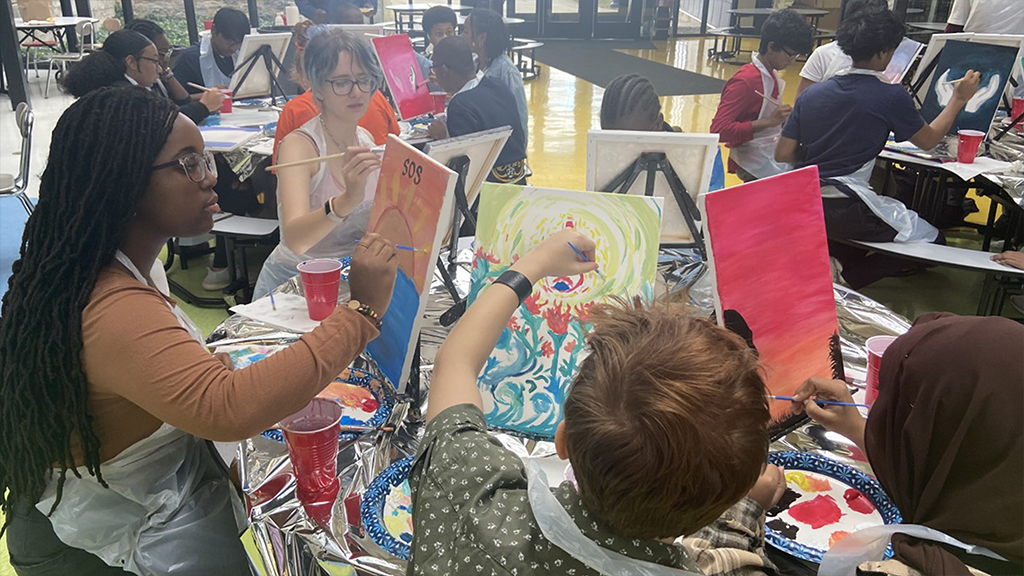
For the Our Story final project, students are encouraged to use multiple modalities, including writing, spoken word, and art, to present their personal stories, history, culture, and identity.
PHOTO COURTESY OF BUFFALO PUBLIC SCHOOLS
An agriculture career pathway program for K-12 students links them to the land and potential careers; a high school program offers students at risk of dropping out support, community, and job training; high school students of color participate in an after-school and Saturday program that provides a more expansive view of history while boosting graduation rates. These are among the winning programs for the 2023 Magna Awards.
For more than 25 years, the Magna Awards have recognized innovative school district programs. Our winning programs—the Grand Prize winners, the Silver Award winners, and Honorable Mentions—represent the enormous efforts of school leaders and district staff to reinvent and rethink education for their students, staff, and communities.
We present these winning programs in the hope that you will discover information that you can use in your districts. Our profiles give you an overview of the programs, including evidence of success. We include district contact information so you can find out more from the school leaders and staff who manage these initiatives.
In addition to the following stories, we created an opportunity for you to learn from the three Grand Prize-winning districts. They will be presenting on their programs at NSBA’s Annual Conference, April 1 to 3, in Orlando.
We invite you to connect with your peers to gain insights and practical ideas to create more equitable schools for your students. Consider entering your district program in the 2024 Magna Awards.
Our Story Project
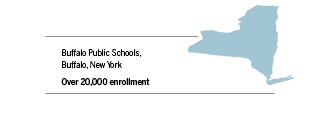
The Our Story Project (OSP) is an after-school and Saturday academy program that provides extended learning opportunities to Buffalo Public School District students. The program operates out of five high schools and serves approximately 140 students each year. Teachers receive high-quality professional development through the district’s Office of Culturally and Linguistically Responsive Initiatives (CLRI), which developed and implements the program.
Buffalo is one of the most racially segregated and poorest cities in the United States, and 70% of the district’s students are economically disadvantaged. Of its 31,700-student enrollment, 82% are students of color, including Black, Latinx, Asian, and Native American students.
At the time of OSP’s development in 2016, the curriculum at the secondary level was taught through a Eurocentric lens. Qualitative data gathered from the district’s Urban Forum in 2016 showed that students of color perceived a lack of inclusion of their historical backgrounds in the curriculum taught, as well as a lack of understanding of how they are positioned as people, in the historical context of the U.S., New York, and their own city of Buffalo. In 2016, the four-year June graduation rate for Black students was 62%; it was 52% for Latinx students.
The CLRI team was convinced that a contributing factor to the disproportionate graduation rates for Black and Latinx students was a result of students not seeing themselves historically or within the curriculum and a lack of access to culturally relevant learning opportunities. The team began to create opportunities for high school students to engage in a curriculum that includes diverse perspectives and focuses on the diverse histories of the communities and cultures representative of the student populations served.
Field excursions and history lessons, including the study of pre-Colombian and ancient African civilizations and cultures, allow students to understand their history and legacy of greatness prior to the period of enslavement. Students discuss historical influences on current events, study books by diverse authors, and delve into works including Racism, Antiracism, and You: A Remix of the National Book Award-Winning Stamped from the Beginning and The Immortal Life of Henrietta Lacks.
Guest speakers, engagement in the arts using a culturally relevant lens, and internship and mentoring opportunities with exemplary professionals of color are all major tenets of the project. At the end of each year’s program, students take a trip to walk in the legacy of greatness and their ancestors. The excursions include New York City, Washington, D.C., and the Civil Rights Trail in Alabama, in which students reenact the famous walk over the Edmund Pettus Bridge in Selma, Alabama.
The program culminates with a final project that showcases students’ personal stories, history, culture, and identity. Students also sharpen their public speaking skills as they present these final projects at an official culmination ceremony attended by teachers, administrators, parents, central office staff, school board members, and community members and leaders.
Students who were often marginalized in classrooms have found an intellectually safe space in the program, and as a result, their social-emotional growth and commitment to scholastic endeavors have all been positively impacted. Since OSP’s onset, graduation rates for African American and Latinx subgroups have risen by at least 13 percentage points.
The program has successfully provided students with a pathway to raise their voices, see themselves represented in the curriculum, and increase achievement outcomes for students of color within the district.
An outgrowth of the program is the development of the Emancipation and Rising Voices curriculums for use in grades K-12. These curriculums infuse key learnings, historical contributions, and current events that focus on the cultures of African Americans, Latinx, Indigenous, and new Americans, who represent most students in the district.
Contact
Fatima Morrell, chief of Culturally and Linguistically Responsive Initiatives
fmorrell@buffaloschools.org
www.buffaloschools.org
College & Career Academy
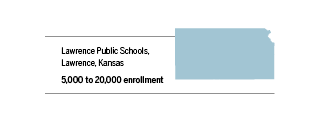
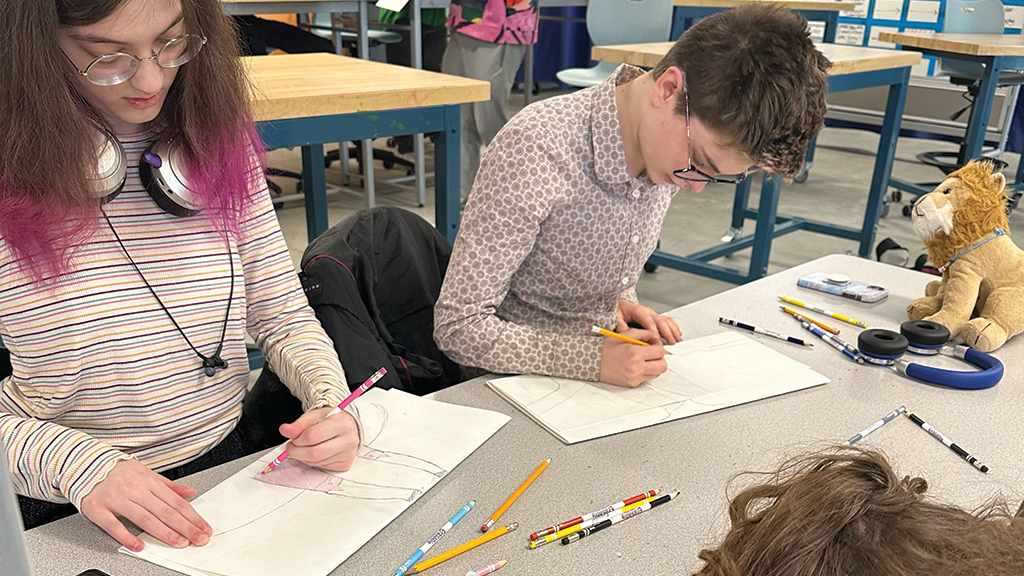
Academy students participate in a weekly art therapy class taught by the program’s artist-in-residence.
PHOTO COURTESY OF LAWRENCE PUBLIC SCHOOLS
The College & Career Academy is designed to support students from two district high schools who have previously not been successful in the traditional high school setting. Students accepted to the academy are generally credit-deficient and do not have a strong history of attendance and engagement in school.
Lawrence Public Schools’ graduation rates were declining while Kansas’ overall rates have improved. The program was created as a dropout prevention program and provides students with a smaller learning environment and exposure to career training through the district’s college and career pathways.
Student demographics for the district, which is in the same city as the University of Kansas, are: white 75.1%, Hispanic 7.2%, Asian 5.9%, Black 5.0%, American Indian/Alaskan 2.4%, and Pacific Islander 0.1%.
There are many factors causing students not to finish high school. There are push-out factors (suspension, grades, safety), pull-out factors (pregnancy, illness, work to support others), and fall-out factors (no sense of belonging, no family support). When these circumstances occur in a large school setting, students can easily get lost and discouraged. School administrators and teachers would often have conversations with students who were either disengaged, experiencing anxiety, or might have had some event that was taking them away from regular attendance.
At the time, there were only two options for these students: Make a plan and figure it out or drop out and get your GED. School leaders believed the district could do better. They decided to use empty space at the existing College & Career Center, where many CTE pathways were housed, to give these at-risk students access to career pathways and a flexible, nontraditional high school experience.
The academy is in its third year, which means the first year occurred during COVID. It has had a steady enrollment of 75 students each year. In 2021-22, it graduated 44 students previously at risk of not graduating. It has demonstrated increases in attendance and credit acquisition as well as decreases in behavior incidents due largely to the focus on student social and emotional well-being and restorative practices.
The College & Career Academy prepares students for self-sustainability through learning academic, career, social, and emotional skills leading to high school graduation, career path employment, and successful completion of a wide variety of postsecondary education opportunities.
Students who choose to attend the academy experience:
- Daily health, wellness, and prevention programming
- Daily academic support programming
- Individualized academic skill development designed
to meet graduation requirements
- Career skill development that leads to high-demand, self-sustaining careers
Integrated courses that identify the relevancy of academic content and provide links to career interests.
Students work on academic or core graduation requirements while also taking career preparation courses. They select a career cohort comprised of students with similar career interests. These include business and computer technology, culinary arts, design, production, and repair (including automotive mechanics, welding, and construction), health science, early childhood education, and teaching as a career.
Academy students spoke before the school board, telling members that the school has given them a sense of a community they didn’t feel at the larger high schools. One student, who had been on the brink of dropping out, said the academy gave her hope and the career skills to plan for her life after graduation.
Contact
Bill DeWitt, principal
wdewitt@usd497.org
www.usd497.org
Agriculture Pathway
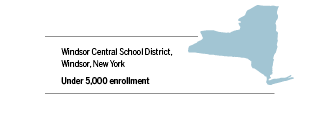
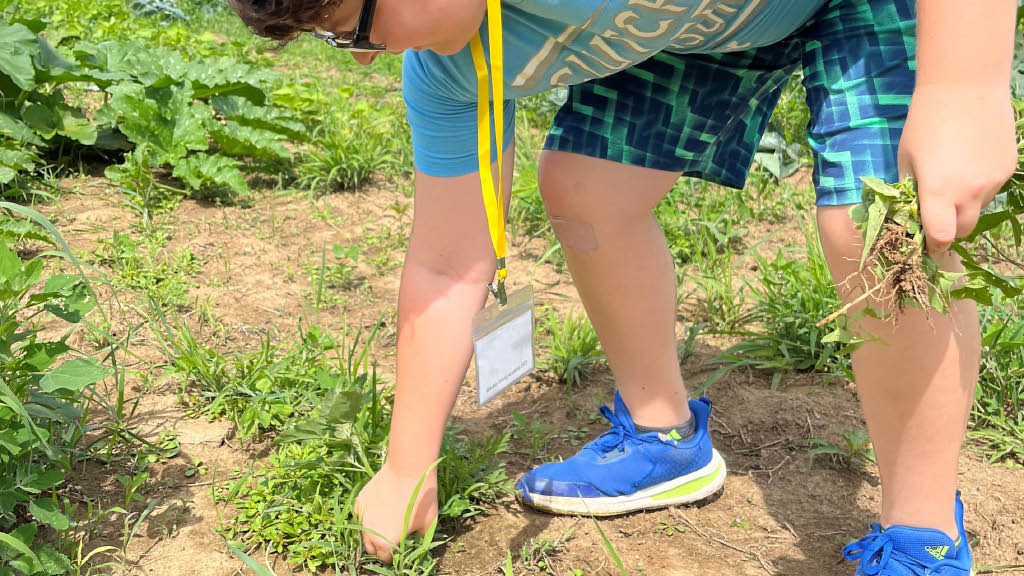
A student weeds a vegetable garden in the Land Lab, a key component of the district’s Agriculture Pathway program.
PHOTO COURTESY: WINDSOR CENTRAL SCHOOL DISTRICT
The Windsor Central School District is a small, rural district located in Broome County, New York. Future Ready Knights is the district’s K-12 comprehensive approach to career development. A guiding principle of the program is to provide meaningful career-ready pathways tied to high-demand regional job sectors to keep students engaged in school from the earliest grades through graduation.
The Agriculture Pathway is a key part of the program. Students are surrounded by farmland, but most do not understand the variety of careers related to agriculture or how to pursue them. The Agriculture Pathway exposes students to agricultural topics in kindergarten, with engaging hands-on lessons from the Agriculture in the Classroom curriculum. These lessons continue throughout the elementary grades into middle school and are augmented by career exploration activities. In high school, students can enroll in full-year courses in advanced agriculture topics and engage in work-based experiences to gain an understanding of whether a career in an agricultural field is one they would like to pursue.
The Agriculture Pathway is supported by an agriculture education advisory committee, which includes the full-time high school agriculture teacher, the Cornell University Cooperative Extension educator who teaches Agriculture in the Classroom in elementary and middle school, a science teacher, and Future Farmers of America students.
Every school in the district has a school garden or greenhouse as an educational resource, and the high school also features an aquaculture lab, an aeroponic tower garden, a welding lab, a small animal collection, four beehives, a livestock barn, and a chicken coop. There also is a 6.7-acre plot of land across from the high school, which has been developed as a Land Lab for use by all grade levels. The Land Lab currently includes open fields for planting, hoop houses, a pole barn with produce washing stations, apple trees, blueberry bushes, and a tractor. Many of the crops grown there are used in the district’s food service operations. The district has developed agriculture education coursework that provides Career and Technical Education (CTE) credits.
Agriculture Pathway courses at the high school include intro to agriculture, food & natural resources; environmental science; plant science; foundations of animal science; ag power (agricultural mechanics technology), welding, and veterinary science.
Recent work-based learning activities that students have participated in include internships at a Department of Environmental Conservation fish hatchery, Animal Adventure (an educational animal park), Kutik’s Honey Farm, and Catskill Cattle (a local farm).
Even though the Agriculture Pathway is only five years old, and high school courses have only been offered for the past four school years, the district is seeing college-bound graduates with plans to major in agriculture-related fields.
Another measure of success is student enrollment. In the 2019-20 school year, there were already 81 students enrolled in agriculture courses at the high school, and there are now 100 students enrolled out of 498 total students. At the middle school, there are currently 59 students, out of 213 total, enrolled in co-curricular agriculture activities.
The program has built-in self-sustainability components, many of which also provide real-world entrepreneurial activities. For example, students learning about poultry farming have raised laying hens and sold the eggs to help fund future expenses. When the calves that are being raised in the livestock farming program are ready, they will be sold for use in school meals. In addition, the district charges tuition for students from other districts to participate in the CTE coursework.
Most students in the Windsor Central School District are white (90.6%), 3.7% are Hispanic, 3.7% are multiracial, 1% are African American, and 1% are Asian/Pacific Islander. In addition, 46% are economically disadvantaged, and 4% are English learners.
Contact
Barbara Tasber, director of learning and continuous improvement
btasber@windsor-csd.org
www.windsor-csd.org

Share this content